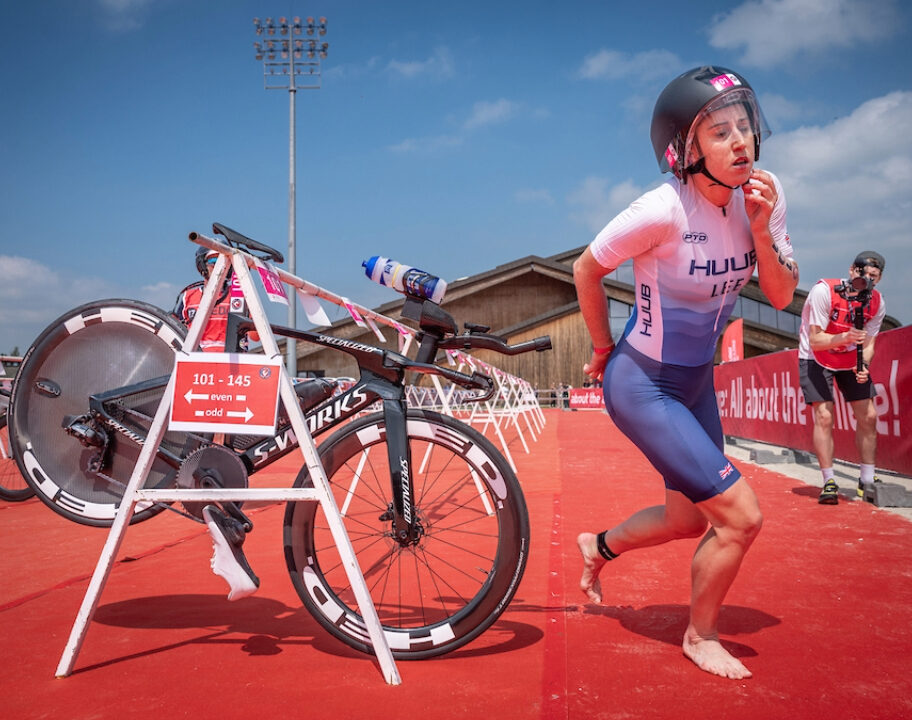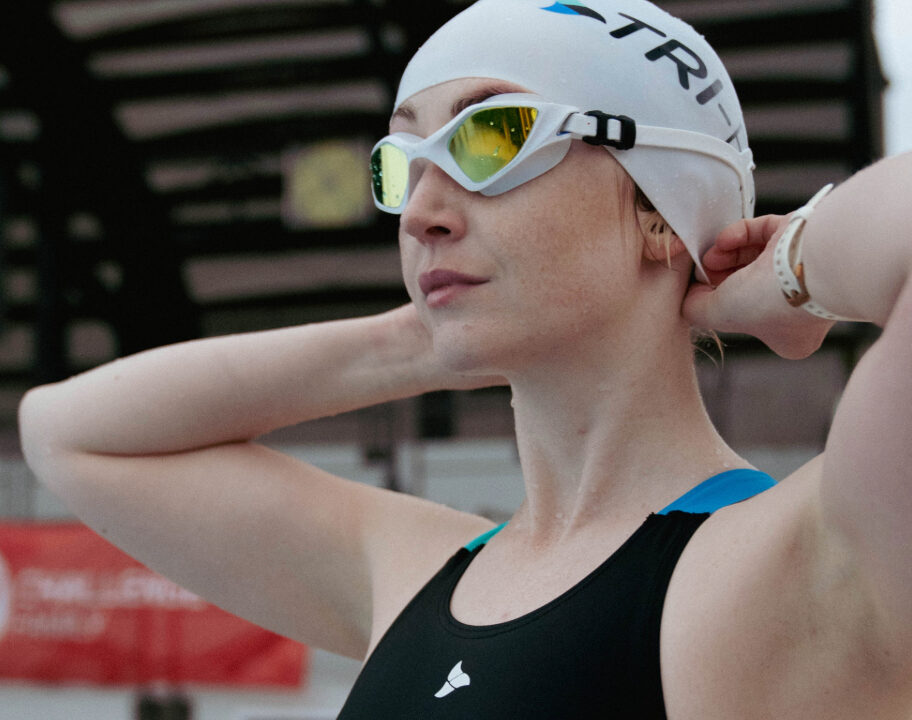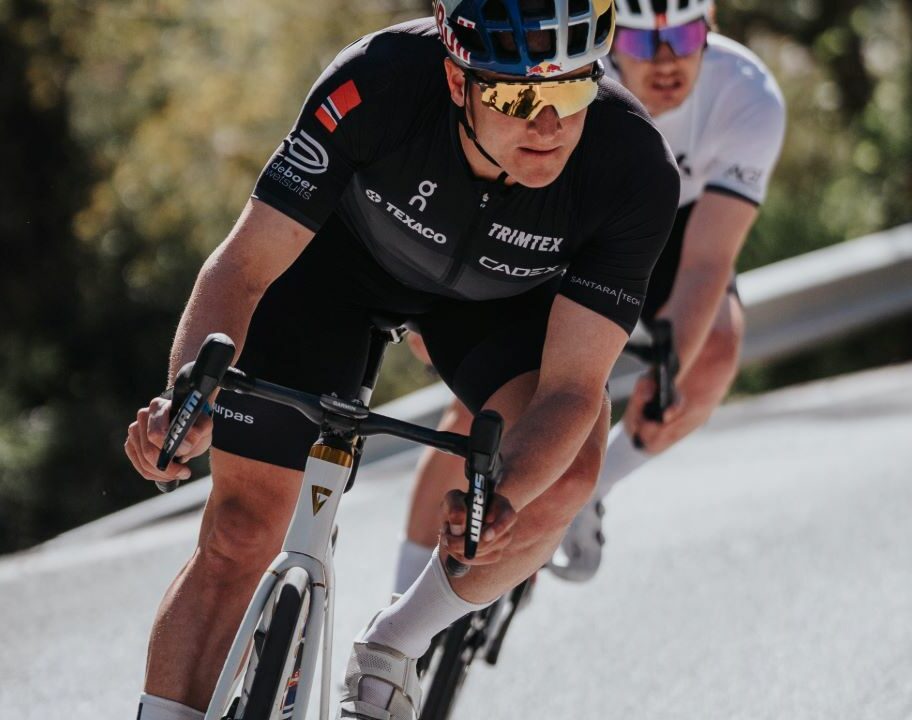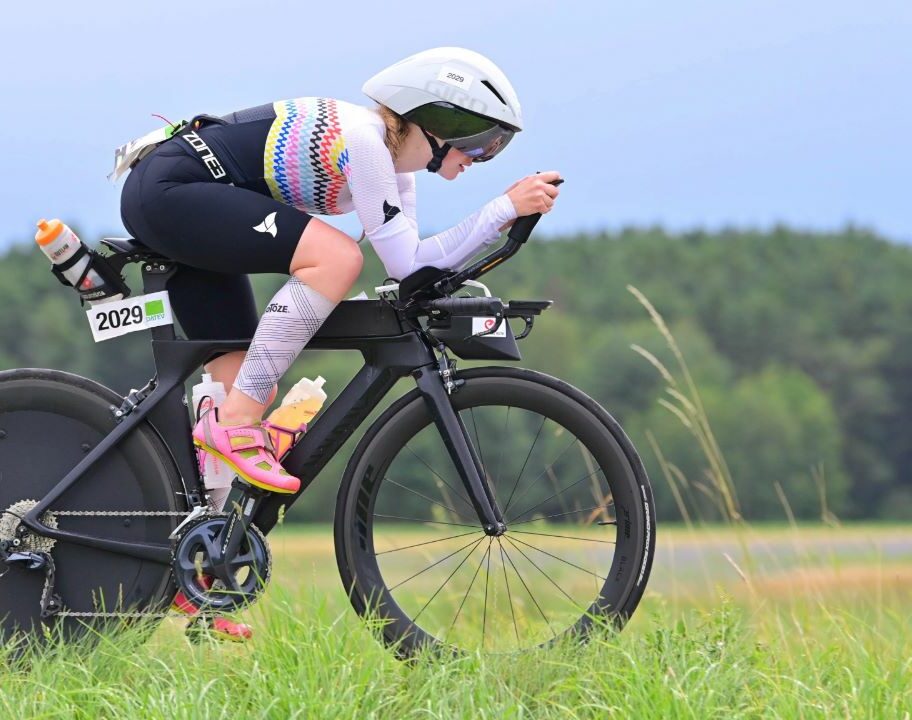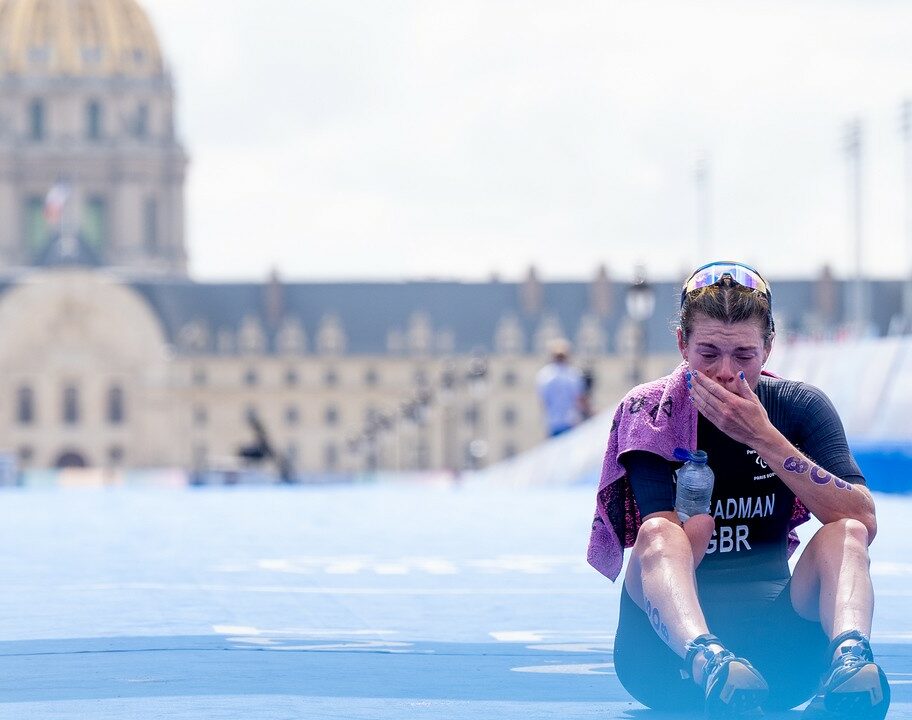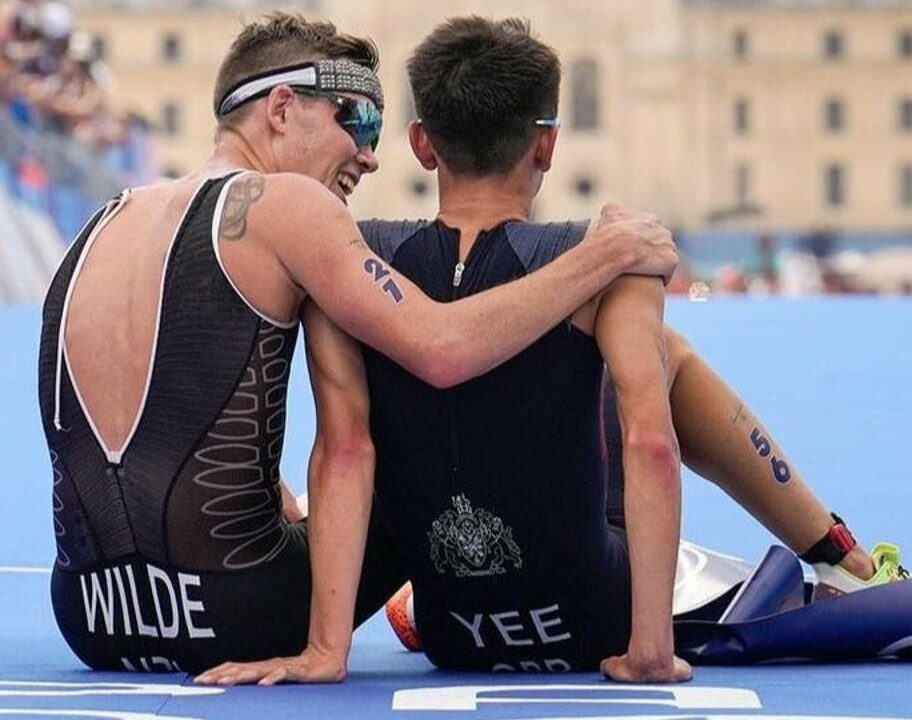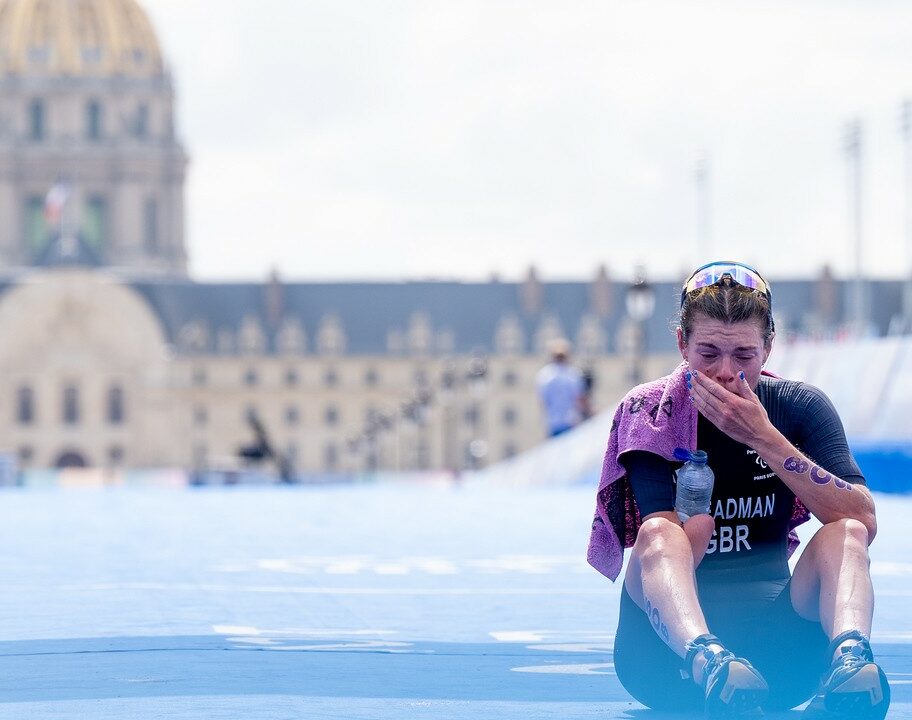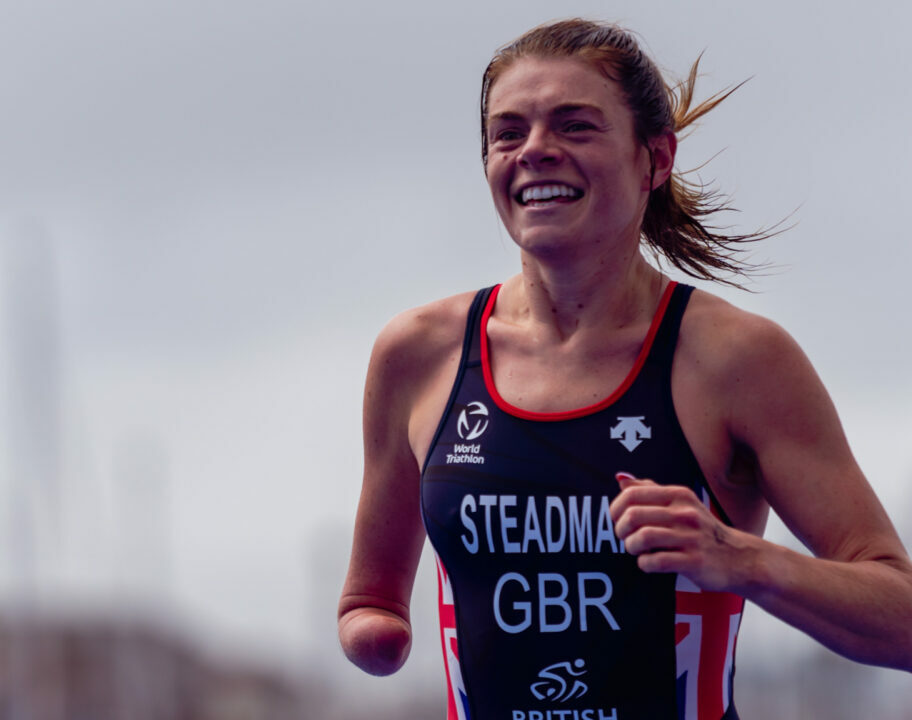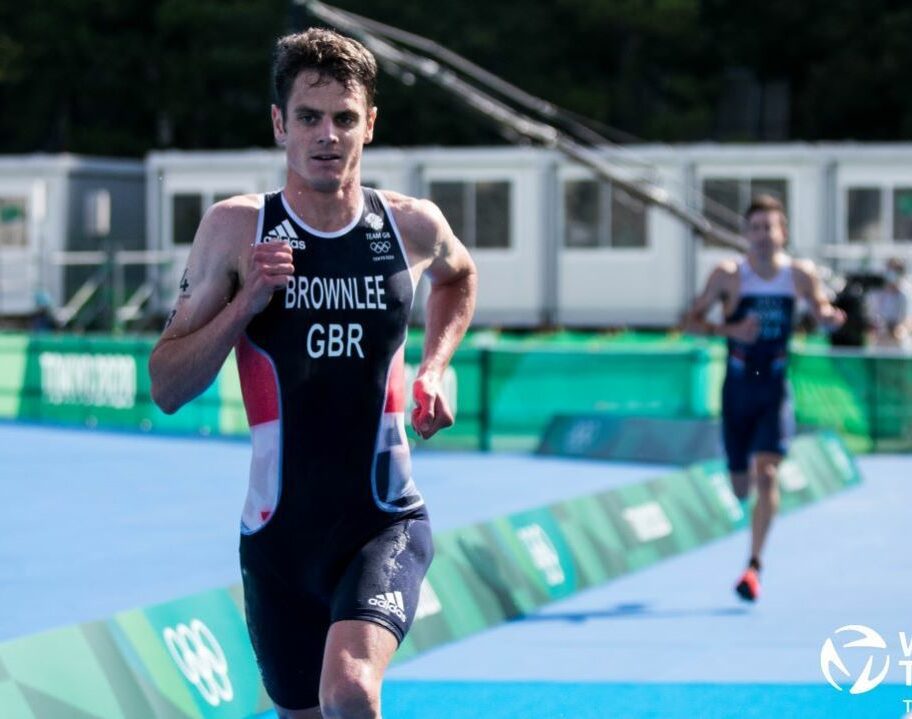Beginner or seasoned triathlete, once you’ve got a few races under your belt you might be wondering how you can improve your triathlon finish times. It’s common to hit a plateau, and while you can always look at training smarter or recovering better between sessions to improve your overall fitness. There are also plenty of things you can do differently on race day to ensure you’re putting down your very best performance.
From gear to pacing, we’ll talk you through some of the common race day mistakes that could be sabotaging your triathlon times… and share some guidance on how to fix them. Ready to get that new triathlon personal record in the bag? Keep reading!
1) Open water swimming sighting and drafting mistakes
While the swim is the shortest part of a triathlon, it’s easy to lose a significant amount of time without even realising it. And coming out of the water further back in the field can also lead to more time lost later in your race. Either by missing the front pack in draft-legal races, or ending up on a congested course in non-draft, long distance events. Alongside working on your swim speed in training, here are two things you can do on race day to improve your triathlon swim split.
Avoid swimming off course
Sighting and navigation issues can lead triathletes to swim off course adding extra time to their swim split. If you often find yourself taking a really wide line to the turn buoys, or you notice you’ve swum way further than the official race distance when you check your watch on your way into T1 – it’s worth practicing your sighting skills.

Get efficient at sighting by practicing during some of your pool swimming sessions. This will help you to sight in open water, without disrupting your stroke. Make sure you’re practicing swimming in open water outside of race day to get used to sighting when the water is choppy or the sun is causing glare. If you notice that every time you sight, you seem to be veering off course it’s also worth getting your stroke looked at to make sure there aren’t any imbalances that are causing you to ‘snake’ in the water.
Make the most of drafting in the swim
In Iron-distance and other non-drafting triathlons, the only time you get to benefit from other people’s speed is during the swim. Get on someone’s feet and you’ll instantly notice that you’re swimming faster for less effort. That means you’ll not only exit the water with a faster swim split, you’ll also have saved some energy for the bike and the run.
Drafting in the swim can feel a bit intimidating if you don’t like being right in the middle of the mass of people all swimming towards the same buoy. Practice it in training by going to group open water swim sessions with your local triathlon club, or recruiting a few of your training buddies to swim with you. Practice swimming ‘on their feet’ so you’re directly behind them with your finger tips almost touching their toes.
Just make sure the person you’re drafting is sticking to the course. If they’re veering off in the wrong direction, the last thing you want is to go with them.
2) Slow transition times
Triathlon is all about the swim, bike and run. But neglect to practice transitioning between the three disciplines, and you could be costing yourself unnecessary time come race day. From fumbling with your wetsuit, to getting lost in transition. Here’s our three top tips to speed up your triathlon transition times:
Practice getting your wetsuit off quickly
In T1, getting your wetsuit off and your bike helmet on as quickly as possible is key to a swift transition time. Upgrading to a wetsuit which is designed for speedy-removal is certainly a consideration which we’ll come back to later. But for now, practice taking your wetsuit off at pace. Watch the PROs and you’ll notice they usually use the run from the swim exit to T1 to get the upper half of their wetsuit down to their waist. Once they’re in transition, they’ll quickly kick their legs out of the suit in one swift movement.
We’ve all had that moment where your wetsuit gets bunched up around your ankles and you end up rolling around on the floor in T1 trying to free your legs from their neoprene prison. The more you practice taking your wetsuit off at speed after training sessions, the more naturally it’ll come on race day when the adrenaline is pumping and it’s easier to make mistakes. If you don’t already, it’s also worth getting some wetsuit lube to put on common ‘catching points’ like your elbows and ankles – it’ll help the suit to slide right off.
Rehearse your transitions, and be strategic
It might feel a bit goofy, but setting up a pretend transition zone and practicing your T1 and T2 routine at home is a great way to get seriously speedy at switching between the triathlon disciplines. On race day, you don’t even want to have to think about what you need to do next when you get into transition. It should be second nature. Practicing at home will commit transitions to muscle memory.

Work out the best way to lay out your gear (or pack your transition bags if you’re competing at larger scale events) so everything is easy to get to, in the order you need to get to it. This will help you to avoid getting flustered, or wasting time rectifying silly mistakes… like trying to run out of T2 while still wearing your bike helmet.
Know the flow and direction of the transition zone at your race
Not being able to find your bike. Forgetting which way you need to go to get to the mount line. Accidentally taking the longest possible route from the bike rack to the run start. Sound familiar? These are all common mistakes every triathlete will have made at some stage, and they can cost you valuable time.
At bike check-in, and again on race morning take some time to really familiarise yourself with the layout of the transition zone. Look out for any landmarks that will help you to find your bike right away. And make sure you know which direction you’re supposed to run through transition, where the mount line is and where the ‘run out’ is.
3) Not optimising your gear
Once you’ve got your training nailed, the gear you choose for your race can have an impact on your overall finish times. From ill-fitting wetsuits that scupper your swim form. To race kits and helmets that add extra drag on the bike. If you’re chasing personal best times, your triathlon gear should be a key consideration. Upgrading to the latest, greatest aero time trial bike might not be feasible. But the following kit upgrades may be more achievable while you save up for your dream bike.
Tri suit
If you’re fairly new to triathlon, you might not have invested in a tri suit yet. But if you’re having to spend time getting changed between the swim and the bike in T1, switching to a tri suit is instantly going to shave minutes off your overall finish time. If you’ve been wearing looser fitting clothing on the bike, you’ll also notice that wearing an aerodynamic tri suit will make it easier to ride faster for less effort because you’re not having to fight against the drag caused by your clothing.

For triathletes who have already been competing in a tri suit, if you want to cover every base when it comes to improving your times then upgrading to a more aero suit could be worth your while. We took a deep dive into the data around the watt savings some of the higher-end tri suits can afford you, and how much time that saves on the bike for an average age-grouper. The results were pretty surprising! Look for tri suits that make use of the latest fabric technology to optimise aerodynamics, and you’ll know that you’re making every watt count.
Triathlon wetsuits
A wetsuit that doesn’t fit you properly can really slow down your triathlon swim times. Too big, and it’ll be letting in water and creating drag. Too small, and you’ll struggle to have the flexibility you need through the shoulders to be able to swim with strength and efficiency.
Upgrading your wetsuit can feel like a pricey investment. But some of the higher end models will have been carefully designed to offer the optimal buoyancy profile and shoulder flexibility to help you swim faster. It’s also worth paying attention to the wetsuit lining – look out for suits that have been designed to come off easily in T1.
Aero bike helmets
If you’re new to triathlon, then an aero bike helmet definitely isn’t essential to taking part. But if you’re a more experienced triathlete looking to save time wherever possible upgrading your helmet is something to consider.
Particularly over the longer triathlon distances – IRONMAN 70.3 and beyond – the time an aero helmet can save you on the bike can really start to make a difference. Be mindful of the conditions you’ll be racing in. A full aero lid tends to compromise on ventilation, which could lead to overheating if you’re racing in hot weather. Ultimately it’s a balance between aerodynamics and comfort.
4) Pacing poorly
A factor which is often overlooked by age-groupers, especially in long distance triathlon, is pacing. When the adrenaline is pumping and you’re feeling good, it’s super easy to go off way too fast. But burning too many matches early on in your race puts you at risk of blowing up, and you’ll end up finishing in a far slower time than if you’d kept the pace under control.
If you’re someone who tends to post a killer bike split, but ends up walking on the run it’s worth considering your pacing strategy. Holding back, even just a touch, early on in the race could enable you to maintain a much faster pace towards the end. Meaning you’ll cross the finish line with a faster overall time.
5) Neglecting nutrition and hydration
If transition is the fourth triathlon discipline, nutrition and hydration has got to be the fifth. If you’ve ever experienced stomach issues or muscle cramping during a triathlon, you’ll know all too well that making a mistake with your nutrition intake can be seriously damaging to your race day performance.

Use your training sessions to really dial in your race day nutrition and hydration. Experiment with different products, take on different amounts of carbohydrates and play around with timing to find a nutrition strategy that works for you. You want to be getting to the end of your longer rides or runs feeling like you’ve still got some energy, and not experiencing any bloating or other gastric issues.
Consider the conditions you’ll be racing in. If it’s going to be hot on race day, then taking on board salts as well as energy will be key to avoid muscle cramps. Get your nutrition and hydration nailed, and you can go into race day with confidence that you’re giving your body all the fuel it needs to perform.
Nip these 5 common triathlon race day mistakes in the bud, and you could easily take a few minutes – or more – off your finish times. Get your training nailed as well, and that new PR will almost certainly be in the bag.
Gear up for race day with training plans, premium triathlon apparel, wetsuits and more at SBRX.

